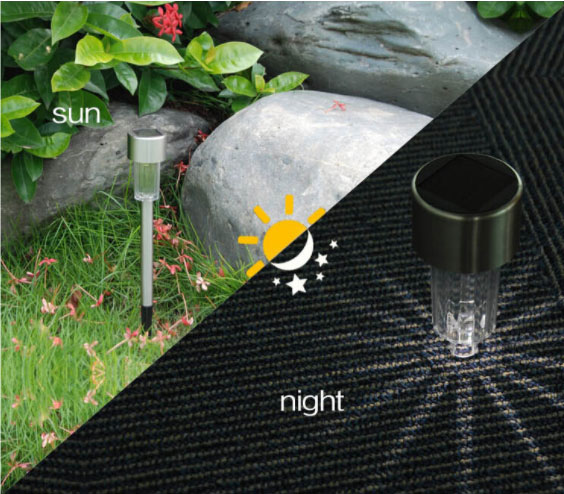Call Us
+86-13805862692
Email Us
contact@ideamage.com
Components of Solar Lawn Light
2022-04-08
Components of solar lawn light
A complete solar lawn light system includes: light source, controller, battery, solar cell components and lamp body. When the sunlight shines on the solar cell during the day, the solar cell converts the light energy into electrical energy and stores the electrical energy in the battery through the control circuit. After dawn, the electric energy in the battery supplies power to the LED light source of the lawn lamp through the control circuit. When the next morning dawned, the battery stopped supplying power to the light source, the lawn lamp subsided, and the solar cell continued to charge the battery, cyclically and cyclically.
The controller is composed of a single-chip microcomputer and a sensor, and controls the opening and closing of the light source part by collecting and judging the light signal. The lamp body mainly plays the role of system protection and daytime decoration to ensure the normal operation of the system. Among them, the light source, controller and battery are the keys to determine the function of the lawn lamp system. The system pivot diagram is shown on the right.
Solar energy cells convert solar energy into electrical energy. There are three types of solar cells: monocrystalline silicon, polycrystalline silicon and amorphous silicon. The functional parameters of monocrystalline silicon solar cells are relatively stable, and they are suitable for use in southern areas where there are many cloudy and rainy days and there is not enough sunlight. The production process of polycrystalline silicon solar cells is relatively simple, and the price is lower than that of monocrystalline silicon. It is suitable for use in the eastern and western regions with sufficient sunlight and good sunshine. Amorphous silicon solar cells have relatively low requirements for sunlight conditions, and are suitable for local applications where outdoor sunlight is lacking.
The working voltage of the solar cell is 1.5 times the voltage of the supporting battery to ensure the normal charging of the battery. For example, 4.0~5.4V solar cells are required for charging 3.6V batteries; 8~9V solar cells are required for charging 6V batteries; 15~18V solar cells are required for charging 12V batteries.

A complete solar lawn light system includes: light source, controller, battery, solar cell components and lamp body. When the sunlight shines on the solar cell during the day, the solar cell converts the light energy into electrical energy and stores the electrical energy in the battery through the control circuit. After dawn, the electric energy in the battery supplies power to the LED light source of the lawn lamp through the control circuit. When the next morning dawned, the battery stopped supplying power to the light source, the lawn lamp subsided, and the solar cell continued to charge the battery, cyclically and cyclically.
The controller is composed of a single-chip microcomputer and a sensor, and controls the opening and closing of the light source part by collecting and judging the light signal. The lamp body mainly plays the role of system protection and daytime decoration to ensure the normal operation of the system. Among them, the light source, controller and battery are the keys to determine the function of the lawn lamp system. The system pivot diagram is shown on the right.
Solar energy cells convert solar energy into electrical energy. There are three types of solar cells: monocrystalline silicon, polycrystalline silicon and amorphous silicon. The functional parameters of monocrystalline silicon solar cells are relatively stable, and they are suitable for use in southern areas where there are many cloudy and rainy days and there is not enough sunlight. The production process of polycrystalline silicon solar cells is relatively simple, and the price is lower than that of monocrystalline silicon. It is suitable for use in the eastern and western regions with sufficient sunlight and good sunshine. Amorphous silicon solar cells have relatively low requirements for sunlight conditions, and are suitable for local applications where outdoor sunlight is lacking.
The working voltage of the solar cell is 1.5 times the voltage of the supporting battery to ensure the normal charging of the battery. For example, 4.0~5.4V solar cells are required for charging 3.6V batteries; 8~9V solar cells are required for charging 6V batteries; 15~18V solar cells are required for charging 12V batteries.

We use cookies to offer you a better browsing experience, analyze site traffic and personalize content. By using this site, you agree to our use of cookies.
Privacy Policy























































